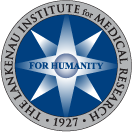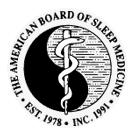Research Portfolio Summary
April 2025
Active
BMS IM027-068 – A Multicenter, Randomized, Double-blind, Placebo-controlled, Phase 3 Study to Evaluate the Efficacy, Safety, and Tolerability of BMS-986278 in Participants with Idiopathic Pulmonary FibrosisSponsor: Bristol Myers Squibb
In this study, researchers hope to learn more about a study being conducted to test the effect of BMS 986278 on improving idiopathic pulmonary fibrosis (IPF). Pulmonary fibrosis is often a chronic, progressive, and potentially fatal lung disease in which scar tissue continuously forms in the lungs. This results in persistent cough, and shortness of breath.
BMS IM027-1015 – A Multicenter, Randomized, Double-blind, Placebo-controlled, Phase 3 Study to Evaluate the Efficacy, Safety, and Tolerability of BMS-986278 in Participants with Progressive Pulmonary FibrosisSponsor: Bristol Myers Squibb
This study was designed to evaluate the efficacy, safety, and tolerability of BMS-986278 in participants with Progressive Pulmonary Fibrosis defined as the presence of at least two of the three criteria, which are worsening respiratory symptoms, functional decline, and radiological progression in patients with interstitial lung disease with radiological pulmonary fibrosis for known or unknown reasons other than IPF, within the previous year.
AIM4 R668-AS-2373 – Multicentered, randomized, double-blind, active-controlled, parallel group study assessing the efficacy of dupilumab added to medium doses inhaled corticosteroid/long-acting beta-agonist (ICS/LABA) in comparison with the guideline-based recommendation to escalate ICS/LABA to high dose ICS/LABA in patients with uncontrolled asthma on medium dose ICS/LABA.Sponsor: Regeneron
The primary objective of the study is to evaluate the efficacy of dupilumab added to medium dose ICS/LABA in reducing severe asthma exacerbations in comparison to ICS dose escalation to high dose ICS-LABA in participants with uncontrolled asthma.
A Structured Educational Program for Patients Regarding Measures to Reduce Environmental Exposure to Nontuberculous Mycobacteria- Impact on Disease Control and RecurrenceInvestigator Initiated: Principal Investigator – Leah Lande, MD
The purpose of this study is to determine whether or not patients with Non-tuberculosis mycobacterium (NTM) lung infection can decrease reoccurrence or eliminate the NTM lung disease by following environmental and habitual activity instructional modifications.
Sub-Phenotypes of ARDS using Rapid prospective Classification (SPARC): An Observational Study (2nd Phase)I-SPY COVID: Testing novel drugs or drug combinations to treat COVID-19
(1st Phase -Closed to Enrollment)
Sponsor: Quantum Leap Healthcare Collaborative (QLHC)
The purpose of Phase 2 SPARC study is to determine whether patients with ARDS or AHRF can be rapidly classified into one of two different types at the time they are admitted to the hospital. A test of the blood collected, and clinical information will be used to classify the type of ARDS or AHRF that participants have. This is a process that could be used in subsequent future research on ARDS and AHRF.
The purpose of the initial I-Spy Covid study was to test if the antiviral drug (remdesivir) used alone or in combination with other investigational drugs can treat COVID-19. The results will be compared between treatment groups to determine which treatments work better, do not work as well as, or do not work well enough to be used for the treatment of COVID-19.
Pulmonary Embolism – Thrombus Removal with Cather-Directed Therapy (The PE-TRACT Trial)Sponsor: National Heart, Lung, and Blood Institute (NHLBI)
The purpose of the study is to determine whether patients with submassive pulmonary embolism (PE) who are treated with Cather-Directed Therapy (CDT) plus medical therapy (CDT group) have better cardiopulmonary health in the year following PE than patients treated with medical therapy alone (No-CDT).
Single Patient Use of Clofazimine/Multiple Patient Program (MPP)Investigator Initiated: Principal Investigator – Leah Lande, MD
This is an opportunity for providers to prescribe patients with drug resistant Mycobacterium avium complex (MAC) with the FDA drug Clofazimine for compassionate use. Physicians apply on a case-by-case basis via an Investigational New Drug (IND) application. This allows patients with MAC an opportunity to have access to an additional drug for treatment of their resistant MAC disease.
Detection of Aspiration in Patients with Ventilator Associated Pneumonia or Tracheobronchitis (VAP)Investigator Initiated: Principal Investigator – Leah Lande, MD; Margarita Gianniosis, MD
The goal of this study is to determine if the development of pneumonia in ventilated patients is from reflux (also known as heartburn) or from aspiration (also known as sucking food or water into the airway).
Pre-Activation Process
Robotic Assisted Navigation Bronchoscopy StudyInvestigator Initiated: Co-Principal Investigator – Thomas Meyer, MD and Patrick Ross, MD
This is a retrospective chart review study to create database of information of robotic navigational bronchoscopies to assess impact and potential to improve standard of care and to determine the diagnostic yield of robotic navigational bronchoscopies at Lankenau Medical Center (LMC)
Recently Closed
Screening from High Frequency Malignant Disease (SHIELD)Sponsor: Guardant Health, Inc
The purpose of the study is to determine if a blood test called GuardantLUNAR-2 can help detect high frequency cancer or other diseases. The main goal of SHIELD is to collect health information and blood samples from people who are at average or high risk for high frequency cancer and are scheduled to have a standard of care cancer screening test.
Harbinger Health Collection of Blood and Tissue Samples from Cancer and Non-Cancer Subjects for Validation of a Novel Blood-Based Multi-Cancer Screening Test (CORE-HH: Cancer ORigin Epigenetics – Harbinger Health)Sponsor: Harbinger Health
In an earlier research study, Harbinger Health developed a test that was shown to detect a variety of different cancer types. A new version of the Harbinger Health test has been developed and is investigational. The purpose of this study is to determine the accuracy of the new test in regard to cancer detection in a blood sample. Blood and tissue samples will be collected from people who have recently been diagnosed with cancer, are suspected of having a new cancer, or who are healthy to test the new version of the Harbinger Health Test. To develop a test that can tell those with cancer from those without cancer, the study must collect blood from both participants who have cancer and those that do not. Tissue from patients diagnosed with cancer will be evaluated to identify abnormalities in certain cancers and provide more information about how certain cancers appear in blood.
A Prospective, Multicenter, Observational Study of LUMRYZ Used in clinical Practice for the Treatment of NarcolepsySponsor: Avadel CNS Pharmaceuticals
The objective of this study is to assess the clinical effectiveness, patient satisfaction and the safety of LUMRYZ in a real-world setting.
Sleep Data Collection StudySponsor: Apple Inc.
The objective of this study is to collect data for product research and development evaluation sponsored by Apple Inc. The study will compare the performance of the Apple Watch (“Watch”) to a medical-grade Home Sleep Apnea Test (HSAT).
Evaluation of a Smartwatch to Track Sleep Physiology over Multiple Sleep SessionsSponsor: Apple, Inc
The purpose of this Study was to evaluate how the Apple Watch (“Smartwatch”) monitors sleep to help determine whether the Smartwatch can be used to track sleep quality at home.
Detection of Aspiration in Patients with Mycobacterium avium complex Pulmonary InfectionInvestigator Initiated: Principal Investigator – Leah Lande, MD
The goal of this study is to determine whether patients with Mycobacterium avium complex (MAC) lung infection get MAC from drinking water and if reflux or aspiration plays a role in the development of MAC. If MAC is found in drinking water as a source of the patients’ MAC infection, we can advise patients on how to reduce their risk of acquiring MAC.
End-tidal CO2 in Patients with Pulmonary Embolism: Correlation with Risk Severity and Reduction in Clot Burden, Pulmonary Hypertension, and Right Ventricular Function in those Treated with Catheter-Directed Therapies Compared to Anticoagulation AloneSponsor: Inari Medical
The purpose of this study is to evaluate the effect of treatment of a blood clot in the lungs (a pulmonary embolism; PE) on how well the lungs function. The lungs are responsible for exchanging oxygen and carbon dioxide from the air and the blood. A PE blocks blood flow to the lungs and can prevent the elimination of carbon dioxide from the lungs. Catheter-directed therapies (CDT) and anticoagulants (blood thinners) are two treatment options for PE. The study investigated if treatment with CDT restored the normal functioning of the lungs seen with exercise better than blood thinners alone. This is important, as the inability of the lung to return to normal functioning may be a sign of other long-term issues.
FlowTriever for Acute Massive Pulmonary Embolism (FLAME)Sponsor: Inari Medical
The purpose of this observational study is to look at treatment outcomes of patients diagnosed with high-risk (massive) pulmonary embolism who have received treatment with the FlowTriever System compared to subjects who received other non-FlowTriever therapies.






